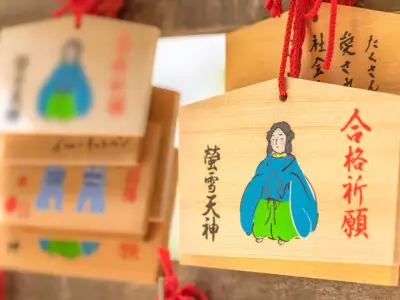Greek mythology is filled with stories of gods, heroes, and mortals whose fates intertwine in fascinating and sometimes tragic ways. One figure who stands out for his extraordinary tale of crime, punishment, and eternal suffering is Ixion, a character who serves as a reminder of the consequences of hubris and betrayal. You might be drawn to his story to understand how Greek myths portrayed human failings, or perhaps the symbolism in his myth has sparked your curiosity. Either way, Ixion's tale is as captivating as it is cautionary.
Jump to:
Recommended for you!
Best SellersWhat Is the Story of Ixion in Greek Mythology?
Ixion was a mortal king, ruling over the Lapiths in Thessaly. As with many figures in Greek mythology, his story is marked by both greatness and disgrace. He started as a powerful and influential king but soon became known for a series of misdeeds that would lead to his downfall.
Ixion's most infamous crime began when he married Dia, daughter of Eioneus. In a shocking act of betrayal, he promised his father-in-law a significant bridal gift but refused to pay it. When Eioneus tried to claim the promised payment, Ixion set a trap, pushing him into a pit of burning coals. This was a grave sin, and it left Ixion as the first human to commit a murder within his own family—an offence that carried a terrible stigma in ancient Greek society.
Despite his sin, Zeus took pity on Ixion and invited him to Mount Olympus, hoping to give him a chance for redemption. But instead of showing gratitude, Ixion made matters worse by developing an inappropriate desire for Hera, Zeus's wife. This offence, seen as an ultimate act of betrayal, sealed his fate.
Zeus devised a cunning plan to expose Ixion’s true intentions: he created a cloud in the likeness of Hera, known as Nephele, and tricked Ixion into thinking he was seducing the goddess. Ixion fell for the deception, and from this union, the race of centaurs was born—half-human, half-horse creatures who would later play significant roles in Greek myths.
What Was Ixion’s Punishment?

Ixion’s betrayal of Zeus’s trust and his lust for Hera led to one of the most gruesome and well-known punishments in Greek mythology. Zeus banished Ixion from Olympus and ordered Hermes to bind him to a fiery, ever-spinning wheel. The “Wheel of Ixion” was a massive, flaming structure that revolved without rest, symbolising eternal torment. According to legend, this wheel was placed in Tartarus, the deepest part of the Underworld, where the souls of the wicked suffered for their sins.
The punishment of Ixion was intended to be a warning against arrogance and disrespect towards the gods. It’s a vivid image of endless suffering, and in artistic depictions, Ixion is often shown strapped to the spinning wheel, his expression a blend of agony and regret.
Ixion’s myth also carries the intriguing narrative of how the centaurs were born. The myth of the “Ixion cloud” explains that his union with Nephele produced these wild and unruly creatures. The centaurs inherited Ixion's violent and untamed nature, and they became known for their chaotic behaviour.
What Powers Does Ixion Have?
Ixion wasn’t known for supernatural abilities but rather for his actions and the consequences that followed. His significance in Greek mythology is tied to his mortal status and the lessons derived from his behaviour:
- Mortal Authority: Ixion was a powerful king of the Lapiths, commanding influence and respect among his people. His power lay in his position and the choices he made as a ruler.
- Reputation for Treachery: What makes Ixion notorious is not any divine power but his reputation for betrayal and dishonour, which ultimately led to one of the most memorable punishments in mythology.
- Symbol of Hubris and Punishment: His story serves as a warning that even kings, despite their earthly power, are not immune to divine retribution. His legacy emphasises the heavy price of arrogance and moral failings.
The Symbols of Ixion

Ixion’s story is rich with symbols that reflect his betrayal and eternal suffering, each carrying a deeper meaning in the context of Greek mythology:
- The Wheel of Ixion: This is the most famous symbol associated with Ixion. It is a fiery, ever-spinning wheel that represents his endless cycle of punishment in Tartarus. The wheel serves as a reminder of the inescapable consequences of grave sins and the eternal torment that follows.
- Nephele, the Cloud: Created by Zeus to deceive Ixion, Nephele symbolises illusion and the perils of pursuing forbidden desires. This cloud embodies the deception that exposed Ixion's lustful intentions and serves as a cautionary emblem of trickery and misplaced desire.
Ixion’s Relationships, Children, and Family Tree
Ixion’s relationships are steeped in treachery and violence, reflecting his fall from a respected king to a disgraced figure whose legacy is tainted:
- Marriage to Dia: Ixion was married to Dia, the daughter of Eioneus. Their union began with deceit when Ixion failed to honour a promised bridal gift to his father-in-law. This betrayal led to Ixion committing a heinous act, pushing Eioneus into a fiery pit as revenge.
- Union with Nephele: Zeus created Nephele, a cloud shaped like Hera, to expose Ixion’s inappropriate desires. Ixion’s union with Nephele produced the centaurs, wild and untamed creatures who embodied his violent and unruly nature.
- Tainted Legacy: The centaurs, as the offspring of Ixion and Nephele, represent the chaos and lack of control that defined Ixion’s actions. His family connections, marred by his sins and crimes, left him remembered as a symbol of disgrace rather than honour.
Ixion’s Worship and Legacy

Ixion wasn’t a figure of worship like the Olympian gods or heroes of Greek mythology. Instead, his legacy is more of a cautionary tale, teaching the ancient Greeks the importance of respecting divine authority and the consequences of unchecked ambition and desire. While Ixion may not have temples dedicated to him, his story has been passed down through generations as a moral lesson and a source of artistic inspiration.
Recommended for you!
Best SellersFrequently Asked Questions About Ixion
What Does the Name Ixion Mean?
The name “Ixion” doesn’t have a clear origin in ancient Greek, but it has become synonymous with betrayal and eternal punishment. In English, it refers to a person who suffers an unending cycle of retribution for their sins.
Did Ixion Impregnate a Cloud to Create Centaurs?
The myth states that Ixion was deceived into mating with Nephele, a cloud shaped like Hera. This union led to the birth of the centaurs, symbolising the wild and untamed aspects of Ixion’s nature.
How Do You Pronounce Ixion in Greek?
Ixion is pronounced as "IKS-ee-on" in English. The Greek pronunciation would be more like "EEK-see-on," with emphasis on the first syllable.
Was Ixion a Centaur?
Ixion was not a centaur. He was a mortal king. However, he is indirectly connected to the origin of the centaurs.
What Is the Lesson of Ixion’s Story?
The myth of Ixion serves as a cautionary tale about the dangers of hubris, betrayal, and disrespecting the gods. It emphasises that even the most powerful mortals are subject to divine judgement and that unchecked ambition and desire can lead to eternal punishment.
What Is the Punishment of Ixion in Pompeii?
In the ancient city of Pompeii, frescoes and artwork depict the punishment of Ixion. These artworks illustrate Ixion bound to the ever-spinning wheel, highlighting the gruesome and eternal nature of his suffering. These depictions served as both decoration and a reminder of moral lessons.
What Causes Ixion’s Wheel to Stop Turning?
In mythology, Ixion’s wheel is described as turning ceaselessly, powered by divine will as a symbol of his never-ending punishment. There is no account of anything that could cause it to stop spinning; it is a reminder of the inescapable nature of his torment.
Who Are Tantalus, Sisyphus, and Ixion?
Tantalus, Sisyphus, and Ixion are all figures in Greek mythology known for their severe and eternal punishments in Tartarus. Tantalus suffers from unending hunger and thirst, Sisyphus endlessly rolls a boulder up a hill only for it to roll back down, and Ixion is bound to a fiery, spinning wheel. They are often grouped together as examples of the consequences of challenging or deceiving the gods.
What Is the Ixion Stone in Greek Mythology?
The “Ixion Stone” is not a common term in Greek mythology. It may refer to a symbolic representation of his punishment or an artistic depiction rather than an actual mythological artefact. The phrase could also be used metaphorically to symbolise something unyielding or linked to suffering.
Study Greek Mythology for £29
If Ixion’s tale has sparked your curiosity about the myths, gods, and heroes of ancient Greece, why not dive deeper? If you’d like to learn more about these myths and explore the characters, symbols, and stories that have shaped Western culture, consider enrolling in the Greek Mythology Diploma Course with Centre of Excellence. For a limited time, you can access the course at a discounted price of £29!













